Woodland photography, or could I call it “forest-scapes”, is a particular niche in landscape photography. And it isn’t necessarily the most accessible genre, although being outside and hiking is relaxing and rewarding. We all want to bring home a beautiful photo as a memory of that woodland. However, the result of our pictures does not always have that calming effect on our experience.
First things first
A nice photo starts with an idea. That is why it is always good to know an area up front. So, put on your walking shoes and start exploring the woods in your area. Discover the fauna and flora of that area. Visiting, revisiting and reading about it will help you discover the multiple possibilities. We need to notice the different moods at different times and weather conditions.
Composition in woodland photography
Ansel Adams already said, “Composition is knowing where to stand “, and precisely that can be challenging in the middle of a dense forest. Not every forest is as suitable for a good photo.
Trees, shrubs or ferns block the sight, and fallen trees or branches scattered all over the place create messy pictures. Many forests are chaotic by definition. When the scene is too cluttered, it becomes more challenging to compose. We must learn to see through the chaos of the woodland and create some order in our picture. When we are on the spot, our brains will probably filter out all this clutter. But our camera registers everything, which will distract us from the beauty we want to express. Simplicity will be the key to success. We must learn to look different when we are chasing photographs in the forest.
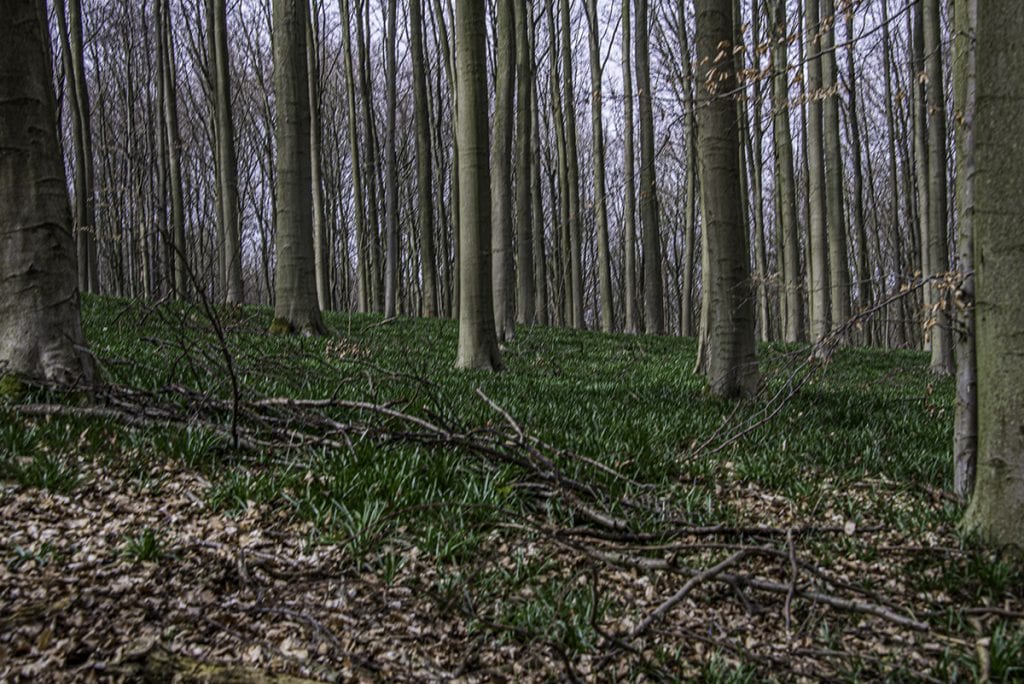
Don’t always look for trees as a whole, except for the smaller or the more distant ones. In the forest, it isn’t easy to single out an entire tree. The best woodland photos are those with a soft, smooth background, which isolates the subject to keep the viewer’s attention focused.
Lone trees in the open can easily be isolated, but in this case, we cannot speak about woodland photography.
In the composition of our woodland photo, the feeling of depth plays a considerable role. Depth allows us to look further into the woods and creates the impression that the forest goes on and on.
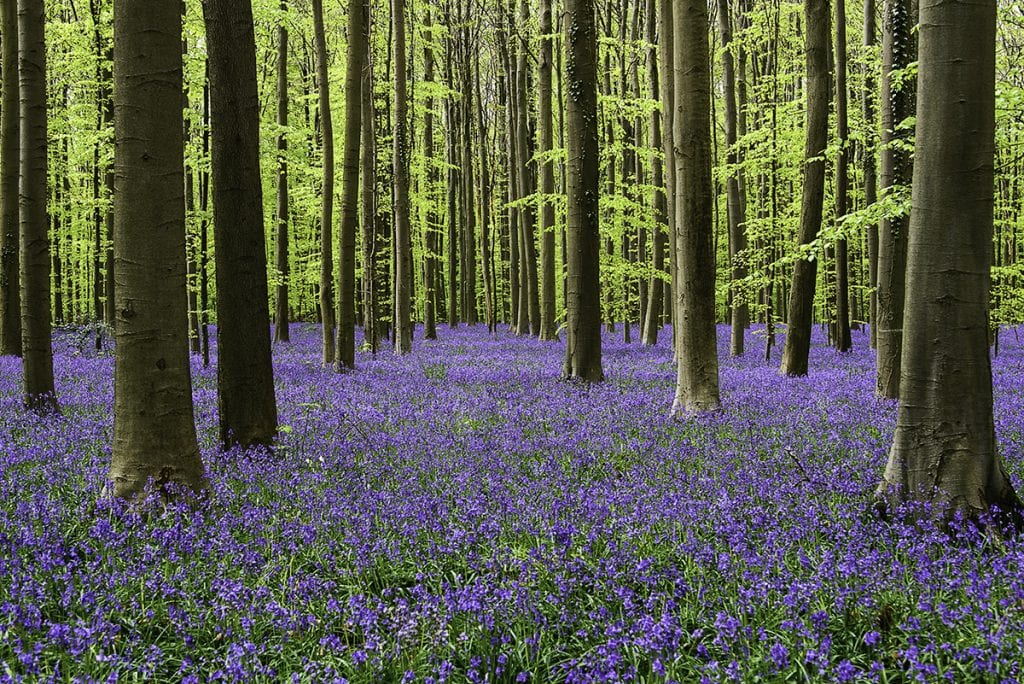
The use of structures and foreground elements for depth in woodland photography
Fallen trees could be used to your benefit as a lead-in line, just as paths or streams. Taking photographs with little depth of field (e.g. F4.0) allows us to exclude the clutter in the background. With little depth of field, we often get exciting colour areas and patterns in the background.
The trunk of a tree will appear powerful and strong, while soft undulating branches will suggest tranquillity.
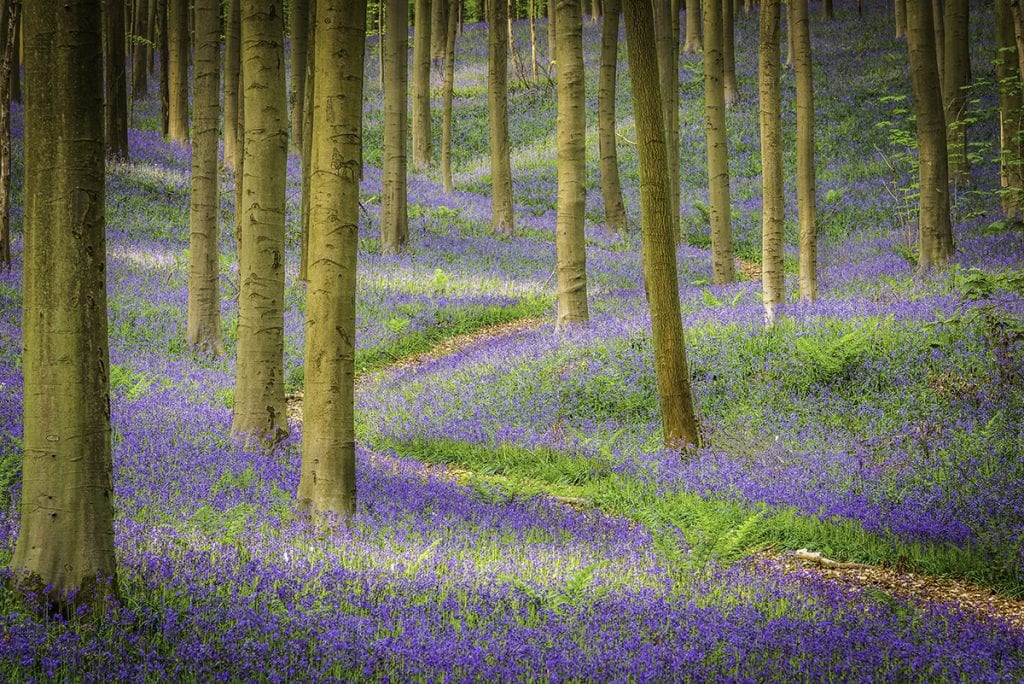
I believe it is always a good idea to exclude the sky as much as possible from woodland pictures. Otherwise, there might be too much contrast between the shadows and highlights.
We should also carefully check all edges and corners in our viewfinder to exclude unwanted protruding branches or bright light spots. Pay special attention to the space and overlap between the trees.
What if conditions are bad?
If we fail to find the perfect composition because of the combination of circumstances or weather, perhaps that is the opportunity to go into more detail with a telephoto lens and focus on forest details such as leaves, branches, and bark.
Woodland photography, seasons and weather
The forest is the best place to show the influence of the seasons. Every season the same scene looks completely different.
In the four-images panel below, I have put together the same forest scene captured in 4 seasons to illustrate the typical atmosphere.

I like autumn with its tonal contrasts and bright and gorgeous autumnal colours. Backlight through the leaves creates vibrant photo opportunities. Check out my blog on colour in landscape photography.
In the autumn, I always carry my macro lens to capture beautiful mushrooms in hundreds of shapes and colours.
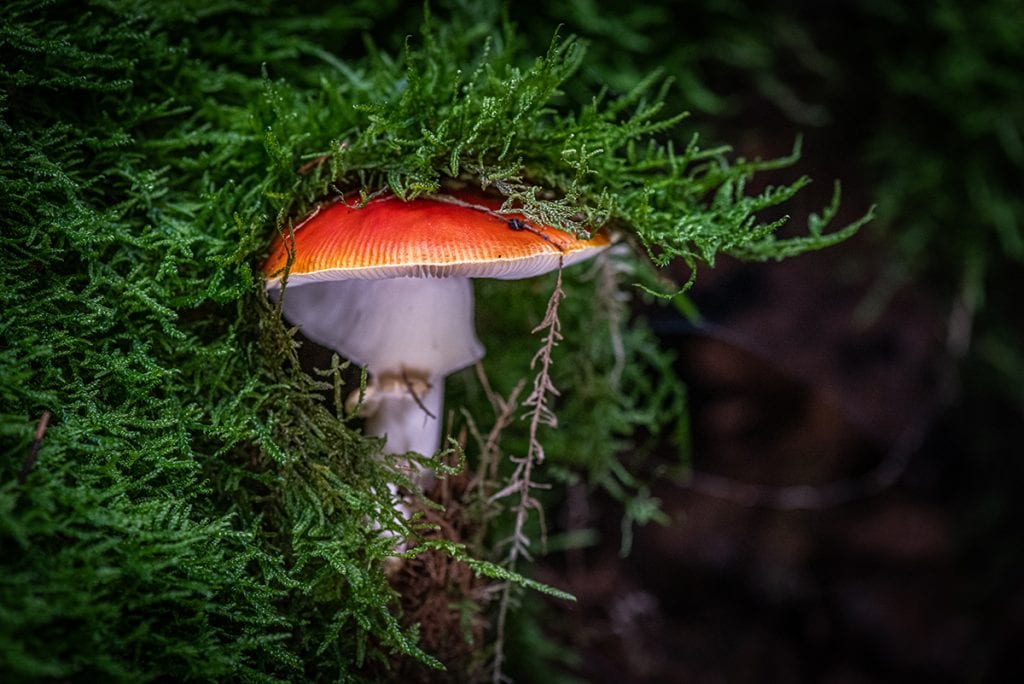
Guy, 2019
In more exotic areas of the world, you might focus on the fauna like little tree frogs.
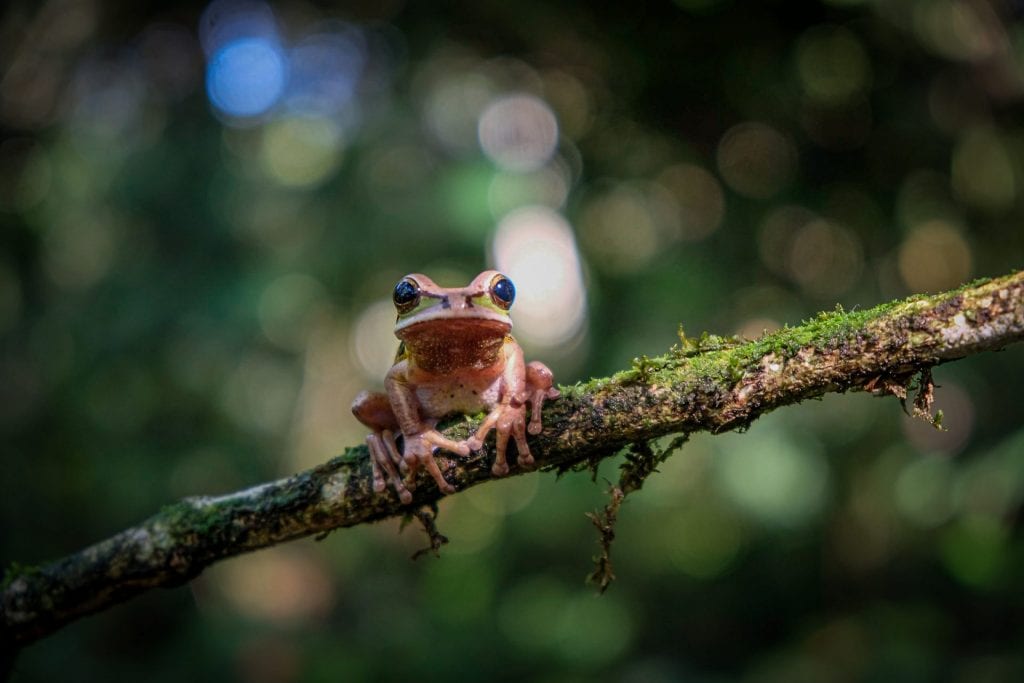
We know the fresh appearance of lush green colours of young leaves or bright flowers like bluebells in spring.
Snowy scenes in winter are also a perfect opportunity for woodland photography.
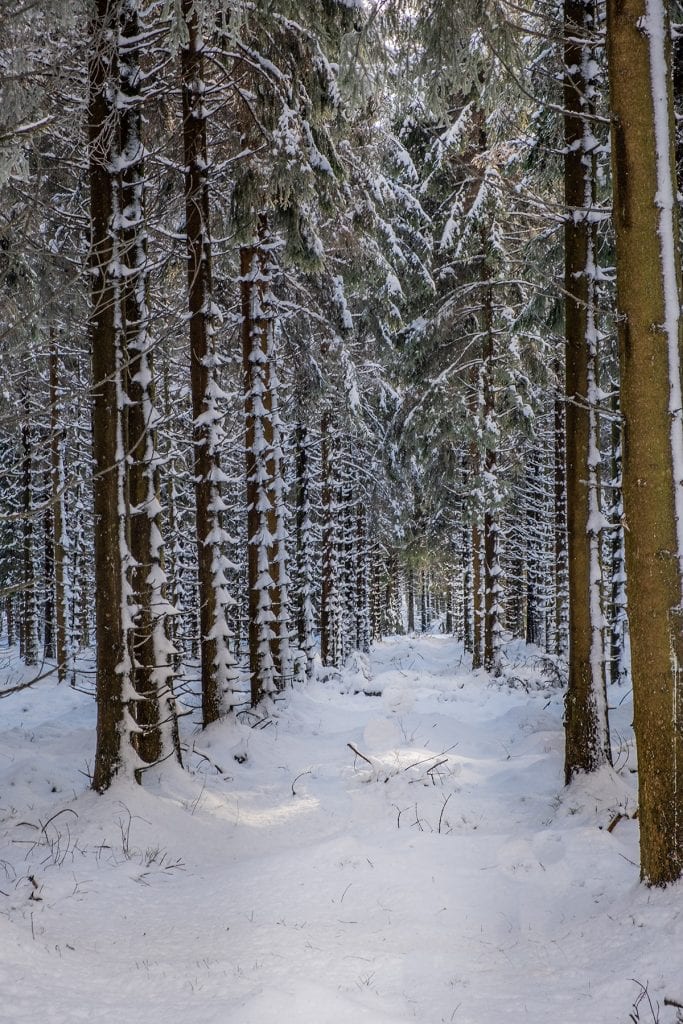
And in summer, we will be challenged by the darker conditions, even on sunny days, because the leaves are shielding off the light.
Misty days add a magical touch to every scene in all seasons, and it can simplify the chaotic view. And when the sun peaks through the mist, it creates those wonderful sunbeams.
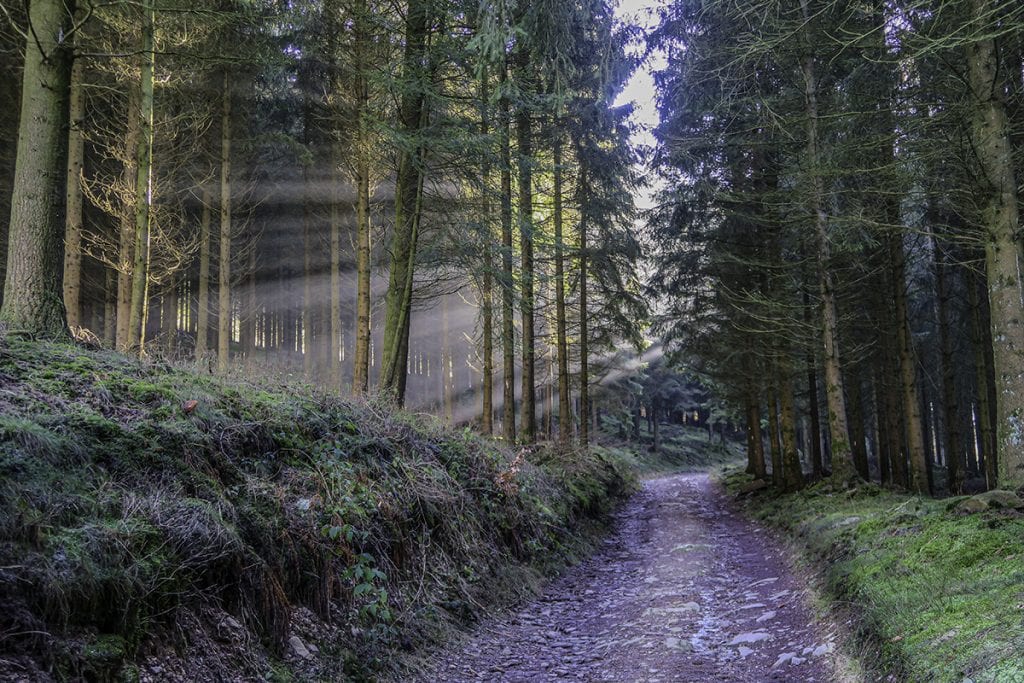
Wet conditions can create reflections on the leaves but also bring out very well the texture and structure of the bark of the trees. The bark of beeches becomes dark in the rain.
Grey, dull skies and rain will soften the light like a softbox and might simplify the scene.
In landscape photography, the golden or blue hour can play an important role, but they might be less obvious or important in woodland photography. The light cannot travel as quickly through all those leaves. Sometimes it is beneficial if the sun is higher above the horizon and peeps through the trees. Try to avoid the light drawing all our attention. Zooming in could help to exclude over-bright spots.
Setting up your camera for woodland photography.
As we all know, the light conditions in forests or parks might be poor. My first forest scapes years ago suffered from camera shake. Unless we increase the ISO, getting pin-sharp handheld pictures will be difficult. Therefore the use of a sturdy tripod is highly recommended. “You recognise the serious photographer by the tripod”. Perhaps the tripod is the essential item in your photography kit in low light (morning, evening, darkness, cloudy, in the forest, …) We often use a lot of depth of field and therefore work with small aperture openings, so that little light falls on the sensor. Shutter speeds of a few seconds to even minutes are not uncommon.
Because most of the time there is little wind in the woods, the tripod can be lighter than the one we need to use in windy open landscapes. The in-camera timer release or an external remote control will avoid camera shake. This allows us to use a lower ISO setting and prevent noise in our picture. That said, the newer cameras can handle higher ISO settings.
You might have to focus manually when it is relatively dark and there is little contrast.
There is a risk that we could be cemented to the ground when we use the tripod. Before we plant our tripod, we need to move around. Do not forget to switch off the stabilisation system when working with a tripod.
If it is windy, it might add an exciting dynamic to the scene because of the moving trees. In such conditions focussing on the tree trunks, which are steadier, is advisable.
Traditionally, landscape photographers think about a wide-angle lens in the first place. But as I already said, the composition might be challenging with many distractions in a dense forest. So, do not forget to bring your standard or telephoto lens to single out the more excellent parts.
Shooting in RAW allows you to correct the white balance if needed.
In wet conditions, a circular polariser will help to reduce the glare of damp leaves, and it will help to make the colours pop.
Getting creative in woodland photography?
Dare to deviate from the “path” (literally & figuratively) if not explicitly forbidden. Do not be afraid to get dirty/wet or dare to stand in the middle of a stream or puddle, or pond.
Revisiting the same scene in different seasons might give you an interesting series of photos.
Creative photography is also possible in woodland photography with, for example, intended camera movement.
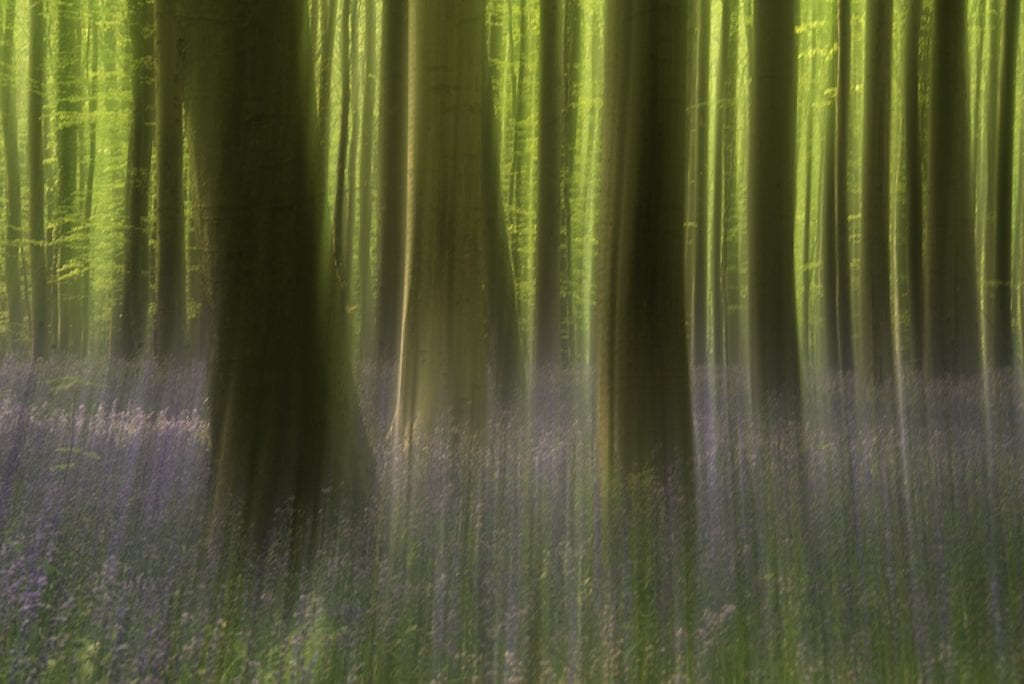
And why not include people in your shot? It will add interest and scale. (see also my blog on people in landscape photography)
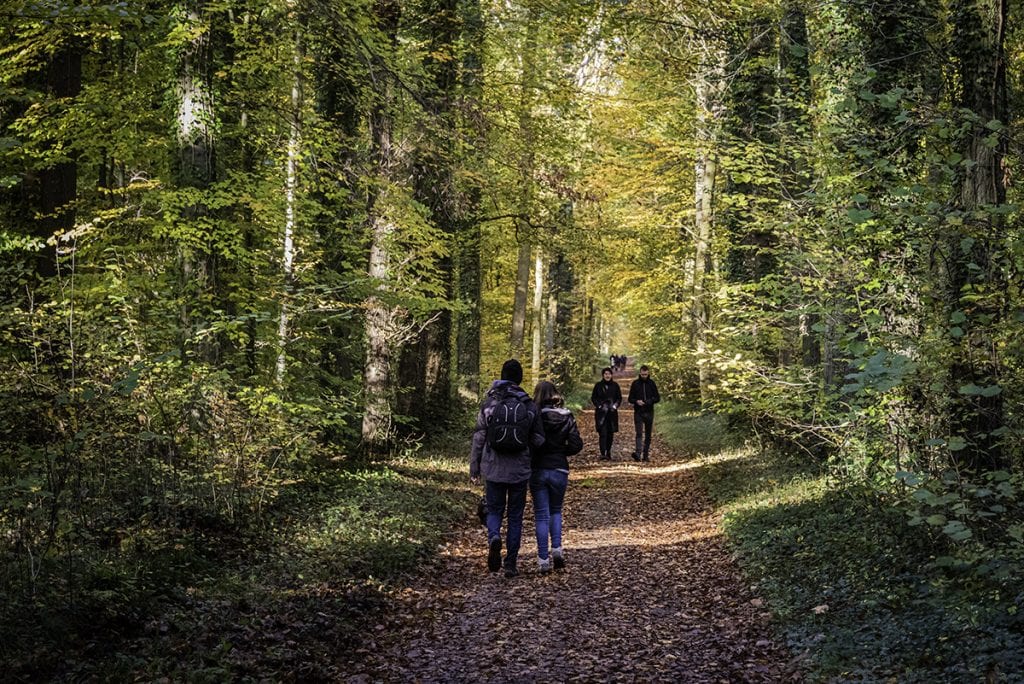
Interesting patterns can even be found in dense forests, as shown in the picture below.
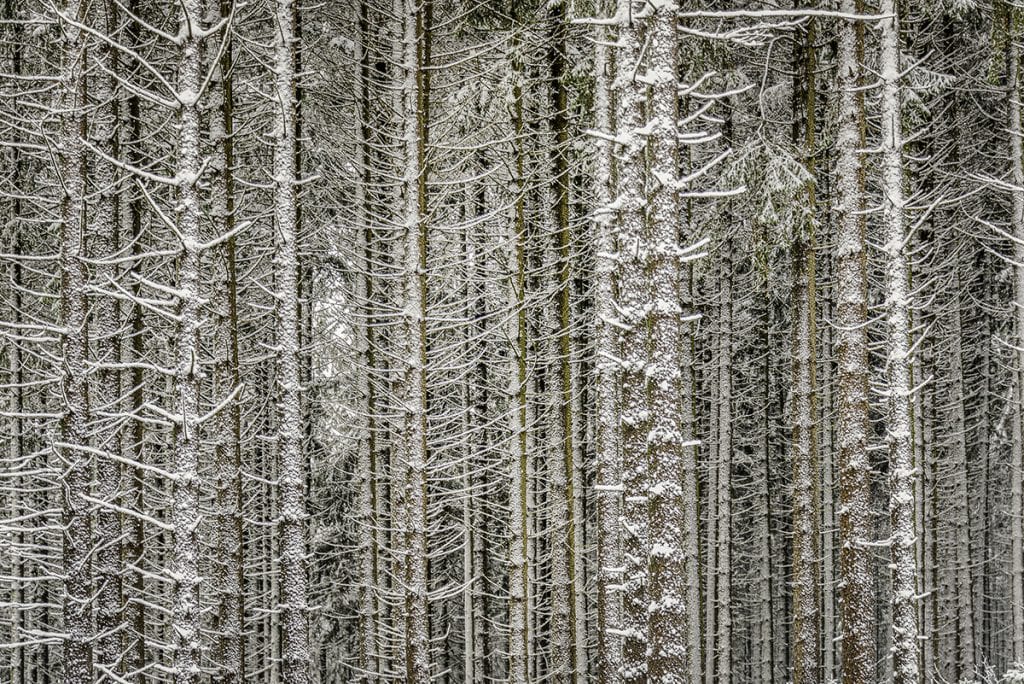
With the help of technology
Pay attention to the position of the sun (shadow and light). A compass comes in handy together with Apps on your smartphone like “The Photographers Ephemeris (TPM)” or “Photopills”.
When planning your walks, use topographical maps or Google Earth to find biotopes like ponds, heathland, streams, paths and even the type of trees you will encounter. A GPS might come in handy in not getting lost when turning around and around in a forest. Most modern smartphones come with these systems.
Woodland scenes can also translate beautifully into black and white. But autumnal scenes, in my opinion, deserve full colour.
As always, I am very interested in your comments or experiences. Leave a comment below!
Leave a reply